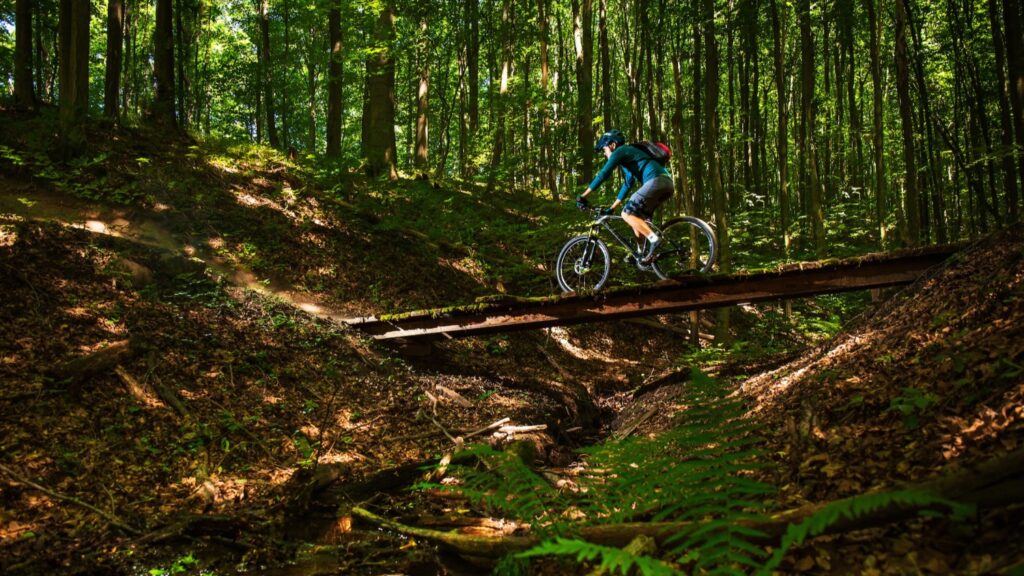5 Tips to Stay Safe Outdoors in Extreme Heat

Extreme heat events, like heat waves and record-breaking temperatures, are increasing in frequency, intensity and duration, particularly during the summer months. In fact, the average number of heat waves per year has more than tripled since the 1960s.
Prolonged exposure to extreme heat can pose serious health risks for people engaging in outdoor activities. The Centers for Disease Control and Prevention estimates that about 1,200 people in the U.S. die from heat-related illnesses annually.
Despite these risks, it’s still important for people to find ways to be outdoors, even if it’s in limited ways, according to Aaron Hipp, a professor of parks, recreation and tourism management at NC State University’s College of Natural Resources.
“Staying active and engaging with nature can have positive effects on both physical and mental health,” said Hipp, whose research examines how, where and why public built environments impact health behaviors such as physical activity and recreation.
In a commentary published in the North Carolina Medical Journal in 2022, Hipp and his colleague, Lincoln Larson, concluded that exposure to parks and green spaces can provide benefits ranging from increased physical activity to reduced stress.
Below, Hipp offers a few tips on how people can safely engage in outdoor activities during periods of extreme heat. These tips are for informational purposes only and should not be considered professional medical advice.
Plan Activities for the Early Morning

If you want to beat the heat during the summer months, it’s best to plan outdoor activities during the coolest times of the day.
Hipp recommended planning outdoor activities during the early morning hours, preferably before 11 a.m. or noon.
While the temperature usually drops in the late evening, it can still be uncomfortably hot during the summer, especially in places with high humidity.
“It’s just a good idea in general to be aware of the temperature and humidity and to adjust outdoor activities accordingly,” Hipp said.
Hipp added that many weather apps provide hourly or daily ratings to help users assess the safety of conditions for hiking, biking and other outdoor activities.
Drink Plenty of Water

Drinking plenty of water throughout the day, even if you don’t feel thirsty, is crucial to maintaining your hydration levels and preventing heat-related illnesses.
When exposed to heat, the body naturally sweats to cool itself. While this helps to regulate body temperatures, it also results in significant moisture loss.
Heat also increases the rate at which moisture evaporates from surfaces, meaning warm air draws moisture from your skin and clothing.
Moisture loss can lead to dehydration, and when the body is dehydrated, it has a harder time dissipating heat effectively. This can lead to a range of heat-related illnesses.
For the average adult who’s working or exercising outdoors, it’s recommended that you drink one cup of water every 15-20 minutes, or 24-32 ounces per hour.
Consider Water Sports

Engaging in activities like swimming, kayaking, canoeing or stand-up paddle boarding provides a way to stay cool and enjoy the outdoors during periods of extreme heat.
Water typically has a lower temperature than the surrounding air, meaning it can help reduce the risk of heat-related illnesses.
Swimming and other water sports also help maintain physical activity levels, providing low-impact exercise that strengthens muscles and improves cardiovascular health.
Research shows that exposure to blue spaces, such as rivers and lakes, also offer comparable mental health benefits to green spaces, including reduced stress.
To find blue spaces near you, Hipp recommended checking out local parks. Many parks have lakes and ponds that can be used for swimming, kayaking and other water sports.
Seek Shade

Trees and other shaded structures can make outdoor spaces more comfortable and enjoyable, according to Hipp.
In addition to reducing direct sunlight exposure, shade also helps to minimize the amount of heat radiating off of surfaces.
When you’re outdoors, your body absorbs infrared radiation from surrounding surfaces, increasing its temperature and making you feel warmer.
Shade effectively prevents outdoor surfaces from absorbing as much solar energy, so they don’t get as hot and radiate less heat.
Hipp recommended hiking, trail running, mountain biking and other outdoor activities in forested areas with dense tree canopies.
Trees and plants in forests and other outdoor spaces not only provide shade but also release water vapor, which helps to cool the surrounding air.
Avoid Strenuous Activities

During extreme heat, Hipp recommended engaging in less strenuous activities such as walking or disc golf to avoid overheating.
“These are accessible, low-impact activities,” Hipp said. “You’re still moving your body, you can still do the activities with others, but you’re not exerting as much energy.”
When your muscles contract during any physical activity, they produce heat as a byproduct of the chemical reactions involved.
The amount and rate of heat production are significantly greater during strenuous activity, further increasing the risk of heat-related illnesses.
Strenuous activity during high temperatures can cause your body temperature to outpace your body’s natural cooling mechanisms, leading to overheating.
Hyperthermia, or overheating, can have various effects on the body, ranging from mild heat rash to life-threatening conditions like heatstroke.


